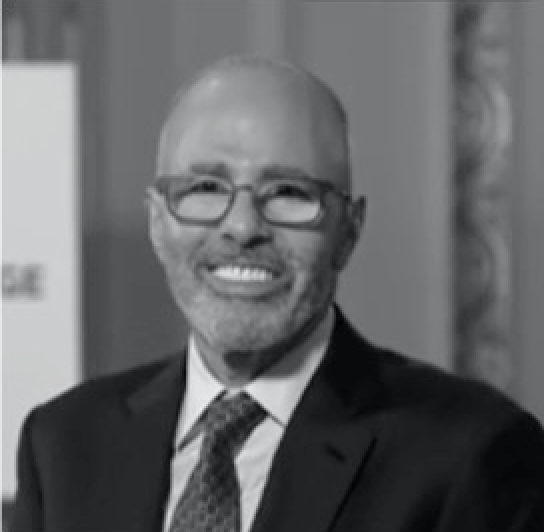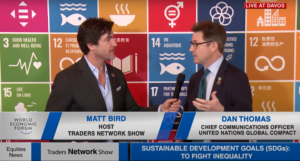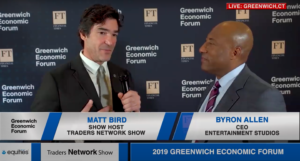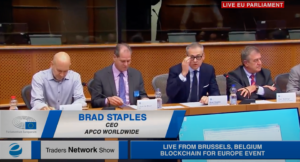IBM Panel Says Blockchain Can Help Improve the Healthcare System – Converge2Xcelerate
Contributed by: Show Editorial Team
Nitin Gaur, Director of IBM WW Digital Asset Lab and Francisco Curbera, Director of Blockchain & Consumer Health Development for IBM Watson on the Design Principles of Blockchain Network Panel at Converge2Xcelerate Conference (Boston, MA)
Time and trust. When Nitin Gaur, Director at IBM WW Digital Asset Lab, distills his work with blockchain technology, he said it comes down to solving for these two elements. Makes sense then that there is big potential for blockchain in healthcare, said Francisco Curbera, Director of Blockchain and Consumer Health Development for IBM Watson Health. The two IBM employees spoke on Design Principles of The Blockchain Network at the 2019 Converge2Xcelerate Conference, which was filmed live by the Traders Network Show hosted by Matt Bird.
The talk focused on how blockchain can eliminate inefficiencies and increase transparency within the healthcare system.
Curbera said recent surveys revealed that healthcare leaders were second behind only financial services leaders in their interest in blockchain technology.
“There is a reason for that,” Curbera said. “Healthcare is particularly fragmented. It’s a very complex ecosystem. Even in the simplest transactions you have many parties—the payers, the providers, the manufacturers, the patient organizations—and these organizations work together. There is a situation in which you have an opportunity to simplify the business process, share data and create a layer of trust that is going to make things that are very complex [and] cumbersome, faster, easier, more effective, and eventually enable transformation of the industry.”
Gaur and Curbera said there are many potential use cases for blockchain in healthcare, from the creation of an information repository on care providers accessible by consumers to the improvement of electronic medical records. But Curbera gave alternative payment models as an example that IBM Watson Health was working to address.
He specifically focused on bundled payment, which is a program designed to create a fixed price for a given care episode. Basically, if you’re going to have knee replacement, bundled care gives the patient an idea of what the procedure and necessary follow-up will cost.
“It is a very simple program from that point of view,” Curbera said. But “it is hard to manage from many different perspectives, among them because there are many parties involved.”
Blockchain can help the various parties—the payer, the providers, the coordinator—complete reimbursement in a trusted manner, where the rules of contracts are agreed upon and tracked from the beginning. Through a repository enabled by blockchain, all parties can see, in real time, the expected services, the price of those services, and the status of payment for those services.
“This allows us to do immediate, real-time reconciliation of those contracts, as opposed to today, where those care episodes take 6 to 18 months to settle,” Curbera said. “So just from the timing point of view, this is a huge gain for everybody. What makes this possible? The trust. The fact that all parties trust the data, trust the rules that are going to be used to settle the contracts.”
Gaur said IBM walks clients through four steps when deciding how to incorporate blockchain: Find the right use case, create a business blueprint, uncover risk and consider enterprise integration.
Essentially, blockchain needs to be able to solve a problem of time in trust in a way that is going to satisfy all parties involved. Finding the right test case might be the most important step, Gaur said, noting there is a reason IBM started with payment rather than electronic medical records: It was easier. He and Curbera explained the way to grow use of the technology is to prove its worth. Might as well do that by starting with issues that blockchain can help solve immediately.
“You can start tackling real problems that have real value and start engaging the communities,” Curbera said. After buy-in builds, “then you can get to the hardest point.”
PR and Media By: CommPro Worldwide
Link to original article: here
(Written by Andrew Waite; Editing and revisions by Nicole Liddy)
All rights reserved to the Traders Network Show. No part of this publication may be reproduced, distributed, or transmitted in any form or by any mean including; photocopying, recording, or other electronic or mechanical methods, without prior written permission of the publisher, except in the case of brief quotations embodied in critical reviews and certain other noncommercial uses permitted by copyright law. For permission requests, write to the publisher addressed “Attention: Permissions Coordinator”








